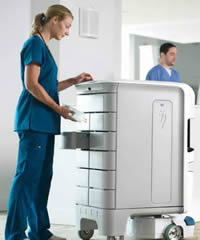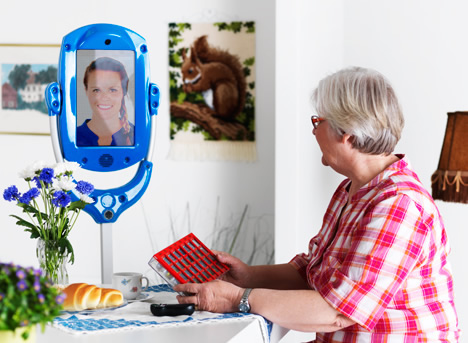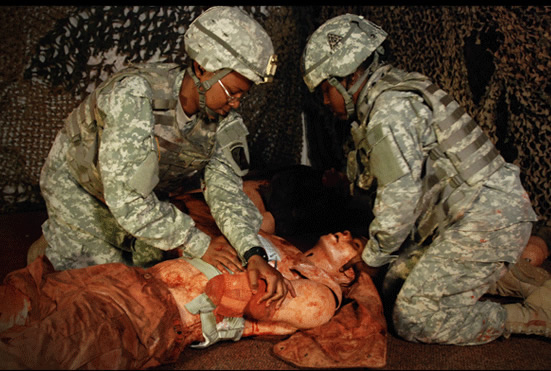Doctor, Doctor, my nurse is a robot!
The NHS is a permanent topic in the news, from strikes and concerns of A&E staff numbers, to care home neglect and the dangers of superbugs and healthcare associated infections (HCAI). To aid this, there have been some developments in robotics to alleviate the strain on healthcare professionals. Electronic Specifier’s Daisy Stapley-Bunten gets up close and personal with the new face of healthcare.
According to NICE (the National Institute for Health and Care Excellence), approximately 300,000 patients a year in England are affected by HCAI as a result of care within the NHS, and this costs the NHS approximately £1bn a year. In ‘2007, MRSA bloodstream infections and Clostridium difficile infections were recorded as the underlying cause of, or a contributor factor in, approximately 9,000 deaths in hospital and primary care in England (NICE, 2012).’
In an effort to eliminate this danger within hospitals, XENEX has developed a germ-zapping robot. Xenex prevents cell replication of pathogens by producing a flash of Full Spectrum germicidal light delivered in millisecond pulses. This Pulsed Xenon UV light causes photohydration, photosplitting and photodimerisation - all of which cause cellular damage to pathogens.
In combination with disinfecting the room with traditional cleaning methods, to help prevent the pathogens from repairing themselves, the Pulsed Xenon UV disinfection system is the only one of its kind on the market, and offers a clear advantage:
- 70% reduction in ICU C. diff infection rates.
- 53% reduction in C. diff infection rates.
- 57% reduction in MRSA infection rates.
- 100% elimination of VRE in isolation rooms.
Mobile delivery robots Aethon has created the TUG autonomous robot that assists with delivery and transportation tasks to allow healthcare professionals more time to spend on their patients.
Aethon has created the TUG autonomous robot that assists with delivery and transportation tasks to allow healthcare professionals more time to spend on their patients.
Using smart autonomous navigation, the TUG uses a pre-programmed map and an Aethon-patented odometry algorithm to calculate its location in real time. It also communicates via WiFi with elevators, automatic doors and fire alarms.
The TUG is self-charging and returns to its charging dock after completing its job. This has been dubbed ‘opportunistic charging’ and allows it to run for ten hours or more at a time.
Giraff telepresence device
Intended for caregivers and recipients, the Giraff system, ‘allows [for] you to virtually enter a home from your computer via the internet and conduct a natural, secure visit just as if you were physically there’, explains the Giraff website.
Video conferencing on remote control wheels, this system allows caregivers to be in two places at once. The video element of Giraff, hosted on a large screen, enables a virtual presence to monitor the health of elderly people who are living alone, but maintains ‘face-to-face’ contact.

The system gives caregivers the flexibility to contact multiple recipients, even for just ‘check-in’ appointments, who they might not logistically have had time to reach physically. Giraff not only assists with elderly individuals living independently, but also individuals living in staffed homes whose family may not be able to visit them as frequently as they would like.
Bestic
Founded in 2004 by Sten Hemmingsson, who was himself in need of an assistive eating device as a result of complications from Polio, Bestic is an assistive eating device which enables individuals to feed themselves, and control the pace of the spoon. The user controls the device using either buttons, a joystick or foot controls depending on their particular needs.
This assistive eating device, whilst it cuts out the human middle man, could actually make it easier to hold a conversation as there is not always an assistant present at mealtimes.
Bestic has a small, robotic arm with a spoon that can be easily manoeuvred and is very quiet, therefore making it more natural in the dining environment for the user.
MSTC
The MSTC (Medical Simulation Training Center) in Fort Carson, Colardo, has a military programme which utilises robotic dummies to train medics under combat conditions. ‘The mannequins can replicate cardiac arrest, gunshot wounds, loss of limb and other injuries common on the battlefield. They can also show symptoms such as ear discharge, sweating and dilated pupils,’ ABC News reported.

The dummies are programmed with sensors, animatronics and a central computer. The mannequins provide feedback for the student, but are also controlled by the instructor with settings variable to stable and critical conditions.
The mannequins are smart, with inflating and collapsible lungs, and a circulatory system with variable blood pressure - helping to teach the military medics to work in a recreated atmosphere and under high stress. This technology could make a life-and-death difference for military medics who then have to apply their training in the field.










